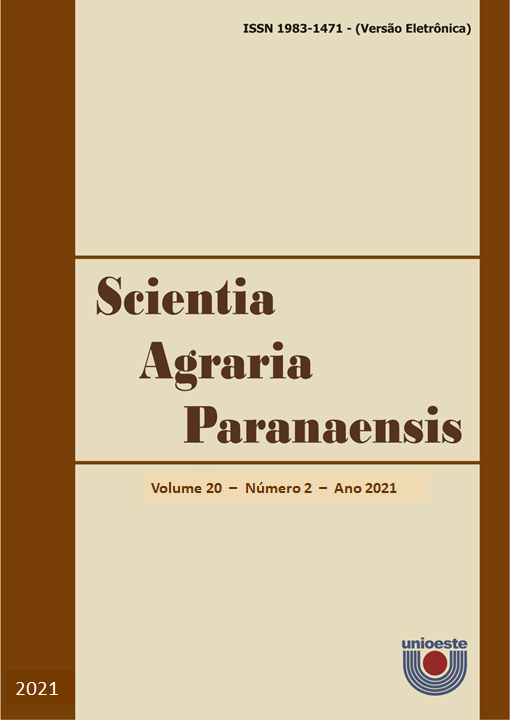Dailily cultivar Regina flowering under different NPK doses
DOI:
https://doi.org/10.18188/sap.v20i2.25987Resumo
The knowledge of fertilization in ornamental plant production is essential to improve productivity and longevity of plants and their flowers. In the case of Hemerocallis x hybrida Hort. there is only few studies showing this relation. The lack of research in the field led the execution of this study, which aimed to evaluate the effect of different doses of NPK on the growth of daylily cultivar Regina. The study was conducted in an experimental area at Pontifícia Universidade Católica do Paraná, located in Toledo, PR, Brazil. Seedlings were obtained from dividing the parent plants’ clumps which were cultivated in a clonal garden. Subsequently, standardization was carried out regarding the length of the aerial part of 10 cm and root system of approximately 5 cm. The experimental design used was randomized blocks with five treatments, containing four replications with five plants each. The treatments consisted of five doses (0; 4.5; 9.0; 13.5 and 18.0 g pl-1) using NPK (4-14-8). The parameters evaluated were number of shoots per plant, number of leaves per shoot, number of stems per plant, length of stems per plant and number of flower buds per stems. We observed the flowering timing was influenced by the different doses of NPK. There was linear fit for the parameters and the dose of 18 g pl-1 promoted the best results, except for the number of stems per plant. The results indicate that increasing doses of NPK positively influence the flowering period, and promote an increase in the number of shoots, stem length and number of flower buds.
Downloads
Publicado
Como Citar
Edição
Seção
Licença
Aviso de Direito Autoral Creative Commons
Política para Periódicos de Acesso Livre
Autores que publicam nesta revista concordam com os seguintes termos:
1. Autores mantém os direitos autorais e concedem à revista o direito de primeira publicação, com o trabalho simultaneamente licenciado sob a Licença Creative Commons Attribution que permite o compartilhamento do trabalho com reconhecimento da autoria e publicação inicial nesta revista.2. Autores têm autorização para assumir contratos adicionais separadamente, para distribuição não-exclusiva da versão do trabalho publicada nesta revista (ex.: publicar em repositório institucional ou como capítulo de livro), com reconhecimento de autoria e publicação inicial nesta revista.
3. Autores têm permissão e são estimulados a publicar e distribuir seu trabalho online (ex.: em repositórios institucionais ou na sua página pessoal) a qualquer ponto antes ou durante o processo editorial, já que isso pode gerar alterações produtivas, bem como aumentar o impacto e a citação do trabalho publicado (Veja O Efeito do Acesso Livre).
Licença Creative Commons
Esta obra está licenciada com uma Licença Creative Commons Atribuição-NãoComercial-CompartilhaIgual 4.0 Internacional, o que permite compartilhar, copiar, distribuir, exibir, reproduzir, a totalidade ou partes desde que não tenha objetivo comercial e sejam citados os autores e a fonte.


